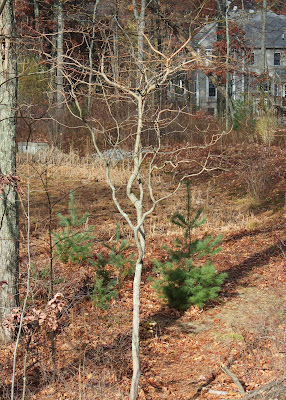 |
| Sassafras leaves turning color for fall |
 |
| I have several of these native Sassafras trees in my backyard. Anyone want to pay some big bucks for them? |
Sassafras has been found to have some analgesic and antiseptic properties. Some people still drink sassafras tea for such things as gastrointestinal problems and for use as a diuretic, and some also use it topically to sooth skin irritation. However, the research from the 1960's found that very large amounts of safrole, which sassafras oil is largely made up of, caused cancer and permanent liver damage in laboratory rats. So don't ever be a laboratory rat. (Oh, and you might want to drink that tea in moderate amounts..)
 |
| The Sassafras tree is also interesting in that it has three different shaped leaves on the same tree! (photo source - Augusta, GA government website) |
High doses of safrole are also hallucinogenic, which is probably why it is used in the making of the drug MDMA, more widely known as 'Ecstasy' and 'molly' (thank you, Miley Cyrus, for bringing that to my attention). Thus the transportation of safrole is closely monitored internationally.
 |
| The Sassafras trees in my yard are just for ornamental use, really! |
Sassafras root used to also be the main flavoring for root beer before its ban by the FDA. Root beer affectionados still make it themselves from natural Sassafras extract that has all dreaded safrole removed. Or they make it from scratch from Sassafras roots. (You can find a recipe here.) Sassafras is also used in Creole cooking. Filé powder, which is made up from the dried, ground up Sassafras leaves and doesn't contain very much safrole, is used as a thickening seasoning for gumbo.
Makes you want to go out and smell some Sassafras, doesn't it?

